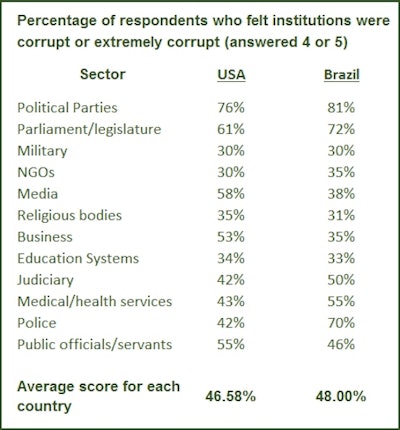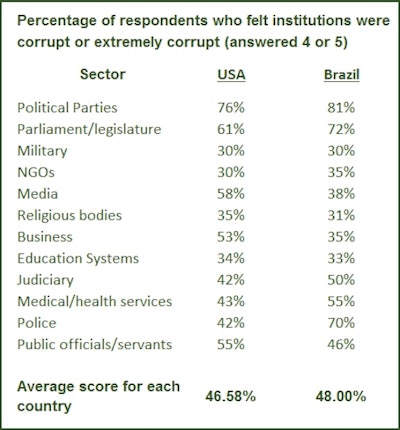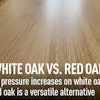
Continuing our discussion from last week about corruption...
Joe Buckhaults, COO of Robinson Lumber Company, pulled together information from two surveys on international corruption. Both are by Transparency International. The Corruption Perceptions Index (CPI) focuses on public sector corruption and the Global Corruption Barometer (GCB) looks at the perception of corruption in many sectors. When you look at many suggested due diligence standards, they all recommend using the CPI to determine the risk of corruption in a country.
Joe pointed out that the results of the GCB are quite different from the CPI. Below are the 2013 GCB results for the U.S. and Brazil.
2013 Global Corruption Barometer (see full results here)

That’s the public impression of all the sectors. As you can see, when averaged the US and Brazil are nearly identical in the average corruption perception in this report. Next Joe pulled out ones that might have the greatest impact on the issue of illegal logging:

There are two major outliers—in the U.S., the business sector is considered about a third more corrupt than how Brazilians apparently view their corporations. In Brazil, distrust of the police is overwhelming. (Unsurprisingly, neither country particularly trusts/likes their government—and remember this is from 2013—I wouldn’t be surprised if the U.S. would come out higher now in dislike of the government and, unfortunately, potentially even of the police.)
Note: In the U.S., the military is unlikely to be a factor in illegal logging, but it isn’t really one in Brazil, either. But it can be in other locations, so we’re pointing it out generally here—and of course when looking at these two countries, it’s a wash. Removing it doesn’t change the results.
Remember, in the 2015 CPI, where a lower ranking indicates more corruption, Brazil ranked 76 (with six other countries) while the U.S. was at 16 (tied with Austria).
Joe points out: “We can take two publications from the same organization and reach quite different conclusions."
He asked me, “When writing a system for exercising 'due care,' how did the CPI become designated as the main resource over the GCB? The CPI only considers public sector corruption, while the GCB also measures the perception of corruption in business, and NGOs. Wouldn’t the GCB be more appropriate or shouldn’t we at least use both?”
As I thought about it, Joe reminded me of a quote by Andrew Lang regarding the challenges of finding the right information and properly evaluating:
We tend to use “statistics as a drunken man uses lamp-posts ... for support rather than illumination.”
I didn’t have a good answer for him. Do you?
































